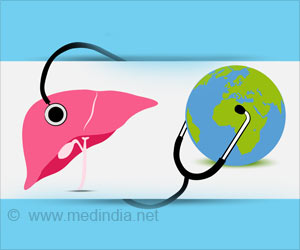
‘Over-testing for Urinary tract infections drives up health-care costs and leads to needless antibiotic use which spreads antibiotic resistance. But a new study reports that Barnes-Jewish Hospital in St. Louis has cut testing for UTIs nearly in half after making adjustments to its electronic health records system.’
Read More..Tweet it Now
Now, new research indicates that making a simple change to the electronic system used by doctors to order urine tests can cut by nearly half the number of bacterial culture tests ordered without compromising the ability to identify people who need treatment for UTIs. The change encourages doctors to first look for signs of a UTI before testing a patient's urine for bacteria.Read More..
"Over-testing for UTIs drives up health-care costs and leads to unnecessary antibiotic use which spreads antibiotic resistance," said senior author and infectious diseases specialist David K. Warren, MD, a professor of medicine. "Ordering tests when the patient needs them is a good thing. But ordering tests when it's not indicated wastes resources and can subject patients to unnecessary treatment. We were able to reduce the number of tests ordered substantially without diminishing the quality of care at all, and at substantial cost savings."
Bacteria in a person's bladder can cause UTIs, which are characterized by burning or pain while urinating, frequent urges to urinate and fever. UTIs are treated with antibiotics. But some people often elderly people or those with diabetes - harbor harmless bacterial communities in their bladders that do not need to be treated with antibiotics.
Before ordering a urinalysis to check for bacteria in the urine, infectious disease specialists recommend that physicians look first for signs of bladder infection using a urine dipstick test. This test can detect inflammatory cells in the urine - signs of a problematic UTI that may require treatment with antibiotics. Discovering bacteria growing in the urine without knowing whether the patient has signs and symptoms of infection leaves physicians uncertain of whether the patient will benefit from antibiotic treatment.
"Doctors get stuck with a result they don't know how to interpret and often prescribe antibiotics because that seems like the safest path to take," said Warren, who is the medical director for infection prevention at Barnes-Jewish Hospital.
Advertisement
The researchers compared all urine culture tests ordered at Barnes-Jewish Hospital in the 15 months before the intervention, staged in April 2016, to the 15 months after. Before the intervention, doctors ordered 15,746 urine cultures or 38 orders per 1,000 patient-days. After, they ordered 45 percent fewer: 8,823 total, or 21 orders per 1,000 patient-days.
Advertisement
"Everyone always worries that by ordering fewer urine cultures we might miss some UTIs, but we showed that we did not," Warren said. Since it costs about $15 to perform a urine culture, the intervention saved approximately $104,000 in laboratory costs alone over the 15-month period. The researchers were unable to obtain pharmacy records to determine whether more careful testing decreased antibiotic prescriptions, but previous studies have shown that minimizing unwarranted testing does reduce antibiotic overuse.
Source-Eurekalert










